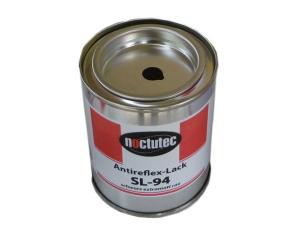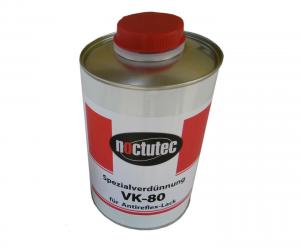- Telescopes
- Overview:
Telescopes - Achromatic Refractor
- Apochromatic Refractor
- Overview:
Apochromatic Refractor - ED Refractor - less color aberration than an achromatic
- SD APO - color free 2-element APO objective
- EDT APO - 3 element ED objective
- High End APO with 3-element APO objective - no color aberation
- Flatfield APO with flat field for Astrophotography
- All Apos and EDs from all manufacturers - large overview
- TS APO and ED from Japan with high quality optics
- Overview:
- Newtonian Telescopes
- Dobsonian Telescopes
- RC Ritchey Chretien Telescopes
- Casssegrain Telescopes
- Reflektor Telescopce with Lens Correcture
- Maksutov Cassegrain Telescopes
- GoTo Telescopes
- Solar Telescopes H-Alpha
- Overview:
- Mounts Tripods Rings Rails Power Supply ...
- Overview:
Mounts Tripods Rings Rails Power Supply ... - Mounts Equatorial with GoTo
- Mounts Equatorial without GoTo
- Mounts Azimutal with GoTo
- Mounts Azimutal without GoTo
- Mounts GoTo - Harmonic Drive
- Travel mounts for astro imaging
- Tripods Piers Polar Wedges
- Mount Control & Electronics
- Dovetail Clamps, Plates and Mount Adapters
- Tube Rings
- Power Supply
- Counterweights Balance Weights
- Mount Accessories - Other
- Overview:
- Telescope Accessories
- Overview:
Telescope Accessories - Eyepieces
- Barlows & Reducer Lenses
- Diagonal Mirrors and Prisms
- Binocular Viewers
- Finder Scopes
- Telescope Collimation and Test
- Cleaning Tools
- Transport and Storage
- Dust protection for Telescopes & Accessories
- Stray Light Protection
- Dewcaps and Heater
- Focusers, Adapters, Motorfocus
- Telescope DIY & Improvement
- Other telescope accessories
- Replacement Parts
- Overview:
- Filters
- Overview:
Filters - Color Filters and Color Filtersets
- Nebular Filters for Visual Observing
- Neutral-Density and Polfilter
- Photo Narrowband Nebular Filters
- Photo Broadband Filters
- Photo Planetary Filters
- Photo R-G-B and IR Cut Filters
- Photo - Filtersets
- Photometric Filters
- Clip Filter for DSLR Cameras
- Filter Wheels and Filterslider
- Solar Filters for white light
- Solarfilter for H-Alpha and Calcium
- Overview:
- Adaptors
- Overview:
Adaptors - Adapter 1,25" and 24,5mm
- Adapter 2"
- Adapter T2 - M42x0.75
- Adapter M48x0,75
- Adapter M54
- Adapter SC
- Adapter M63
- Adapter M68
- Adapter to other Threads
- Adapter Extensions
- Adapter camera bayonet
- Adapter Objective Filterthread
- Adapter Quick Changing , Rotation
- Adapter Eyepiece Projection
- Adapters Tilting
- Overview:
- Astrophotography and Photography
- Overview:
Astrophotography and Photography - Cooled Cameras
- Cameras without Cooling
- Deep-Sky Cameras uncooled
- Set-Offers Camera, Filter, Wheels
- Acessories for Cameras
- Travel mounts for astro imaging
- Imaging Correctors for Telescopes
- Autoguiding Cameras & Sets
- Everything for Guiding
- Focusing aids - Bahtinov mascs
- Flat Field foils and boxes
- Lenses for Cameras
- Piggyback Camera Holder
- Camera Bags, Photocases & more
- Digital Camera and Smartphone Adapter
- Other photo accessories
- Overview:
- Binoculars, Spotting Scopes, Microscopes, Range Finders
- Overview:
Binoculars, Spotting Scopes, Microscopes, Range Finders - Spotting Scopes and Acessories
- Roof Prism Binoculars
- Binoculars with Porro prisms
- Binoculars from 100mm Aperture
- Binoculars with 1,25 inch eyepieces
- TSMX APO Binoculars
- Binoculars for Astronomy
- Binoculars Hiking Bird watching
- Monoculars - Opera Binoculars
- Accessories for Binoculars
- Range Finders
- Microscopy
- Bags for Phototripods & Binoculars
- Overview:
- Phototripods and Binomounts
- Books, Software
- Overview:
Books, Software - Books for Astronomy Beginners
- Star Charts and Planispheres
- Books about our Solar System
- Observing Tips for Amateurs
- Popular Astronomy Literature
- Teaching material
- Astrophotography books
- Telescopes, Observatories, Construction
- Calendars Yearbooks
- Software, Star Charts
- Books for Microscopers
- Books Nature and Animals
- Nature Photography TimeLapse
- Overview:
- Night Vision, Magnifiers, Weather, Domes & more
- Beginner Astronomy and Gift Ideas
- Second Hand & Special Offers
- New products
Manufacturer: Noctutec
Product number: SL94-S
EUR48.90new
EUR 48,90
incl. 19 % VAT (DE)
The VAT indicated refers to that applicable in Germany. After logging in, the VAT amount is adjusted to the applicable VAT of the stored delivery country. Therefore, the final price may vary accordingly.
excl. 6.95 € shipping costs (DE)
more details to the shipping costs ...Please log in to calculate shipping costs to your country.
There are no reviews for this product
- Details..
- Technical data..
- In the box..
- Manufacturer infos..
- Safety informations..
Noctutec Antireflex Lacquer for blackening telescope tubes and components
Antireflex Varnish Spray Can 400 mlThe Noctutec SL-94 Antireflex Paint Spray is based on the varnish SL-94 smooth. The varnish spray is ideal for varnishing secondary mirror spiders, mirror cells and telescope tubes. The substrates to be varnished must be clean, dry and free of grease. Highly absorbent surfaces such as hard paper must be primed beforehand. We recommend sanding smooth substrates.Please observe the instructions in the data sheet. This data sheet is enclosed with every can and is available for download below.
The Noctutec Antireflex varnishs were developed in cooperation with a chemist specialised in varnish and a German varnish manufacturer.
The coatings eliminate up to 99.3% of stray light at an angle of 60°. In 20° grazing light even up to 99.9%! Tested according to DIN EN ISO 2813.
The varnishes are available in smooth and rough and also as spray cans, so that the right material is available for every type of application. The varnishs have been specially developed to adhere to almost all surfaces found in the optical field, especially metals and glass.
Observe all instructions from the technical data sheet of the respective product and the PDF file "Application range" at the end of the page. Only use the products in well-ventilated rooms!
A comparison:

All samples were applied with the same brush on identical substrates for comparison.
Test surfaces taken at a flat angle against the light

To achieve the best anti-reflective properties for extremely flat light incidence, it makes sense to use the SL94-grey varnish as a base. A thin layer of Smooth SL-94 is then painted onto this base. The result is a highly matt surface that works particularly well in flat incidence of light.
This application makes sense wherever light rays hit the surfaces at a very flat angle. We advise applying the varnish with a spray gun here.
The first coat is applied with SL-94 rough. Spray pressure 4-6 bar. Nozzle size 1.5 mm. The second coat is painted after the first coat has dried. Use SL-94 smooth for this.
Important: The second coat must be applied with plenty of air and only very little paint. Smaller nozzles can also be used here. The result is a soot-like paint layer. We sometimes use airbrush guns for the second coat. This works very well.
Experiment with a tube inner surface, taken at a flat angle against the light

Procedure:
The picture was taken in the automatic exposure mode of the camera and not post-processed.
Experiment with a glossy object

Procedure:
Gloss Level Measurement
The gloss level was measured on 03.06.2019 using a calibrated gloss level meter type Elcometer 480. 12 measurements were taken each at 20°, 60° and 85°.The combination SL-94 smooth on SL-94 rough could not be tested. This coating structure is especially suitable for extremely flat incident light, i.e. for the range 45° to below 85°. Internal tests, which were not carried out according to DIN, show excellent values here of less than 1% reflection at 85° (according to DIN angle).
The complete DIN ISO 2813 measurement protocol and the technical data sheets are available for download. The download is for personal information only. Please note that the use of this information in any respect is only permitted with our express permission.
Links to further information (currently only available in German)
Noctutec SL-94 Antireflexlack, technisches Merkblatt
Noctutec SL-94 Antireflexlack, Messprotokoll
Noctutec VK-80 Verdünnung, technisches Merkblatt
Welcher Lack für welche Anwendung
Vergleich von Velours und Antireflexlack
| Colour: | Black |
| Gloss level: | Matt, smooth surface |
| Consumption: | approx. 100-200 ml/m² |
| Manufacturer / Importeur: | noctutec Armin Erndt |
| Street: | Götzendorf 46 |
| ZIP / City: | 91330 Eggolsheim |
| Country: | Germany |
| Telefon number: | +49 9545 3591164 |
| Email: | info@noctutec.com |
| Website: | www.noctutec.com |
Safety informations: PDF Download
Recommended accessories
Customers who bought this product also bought...
Reviews











